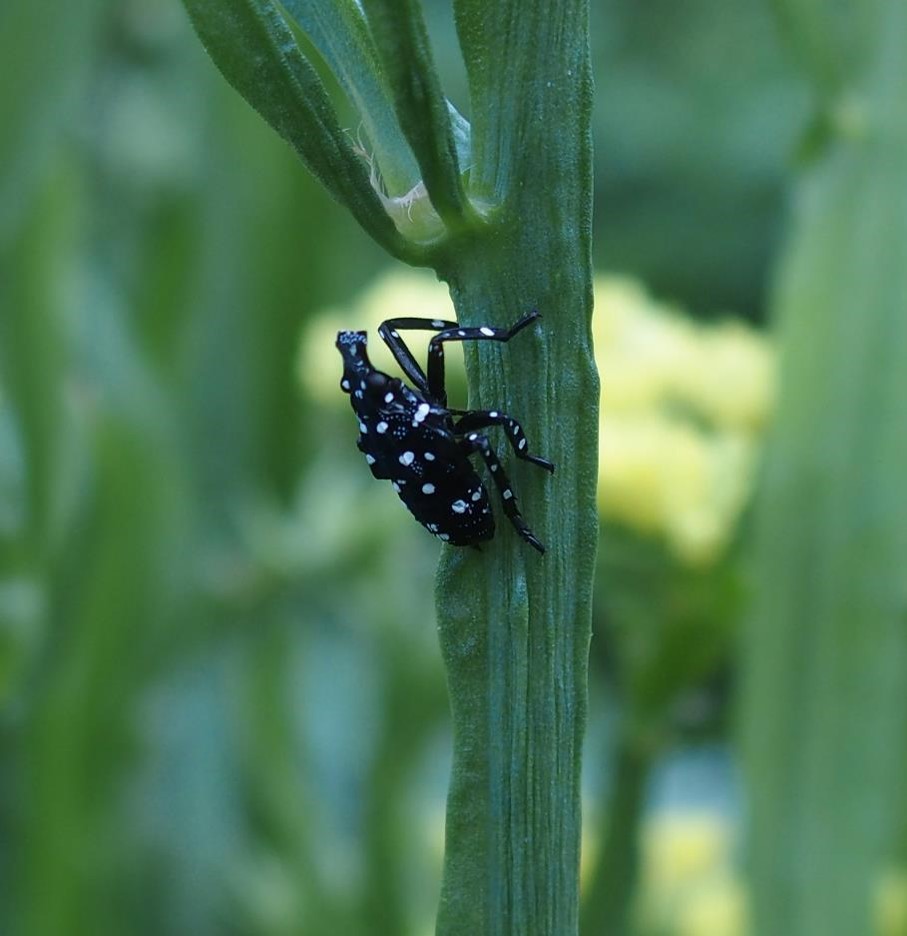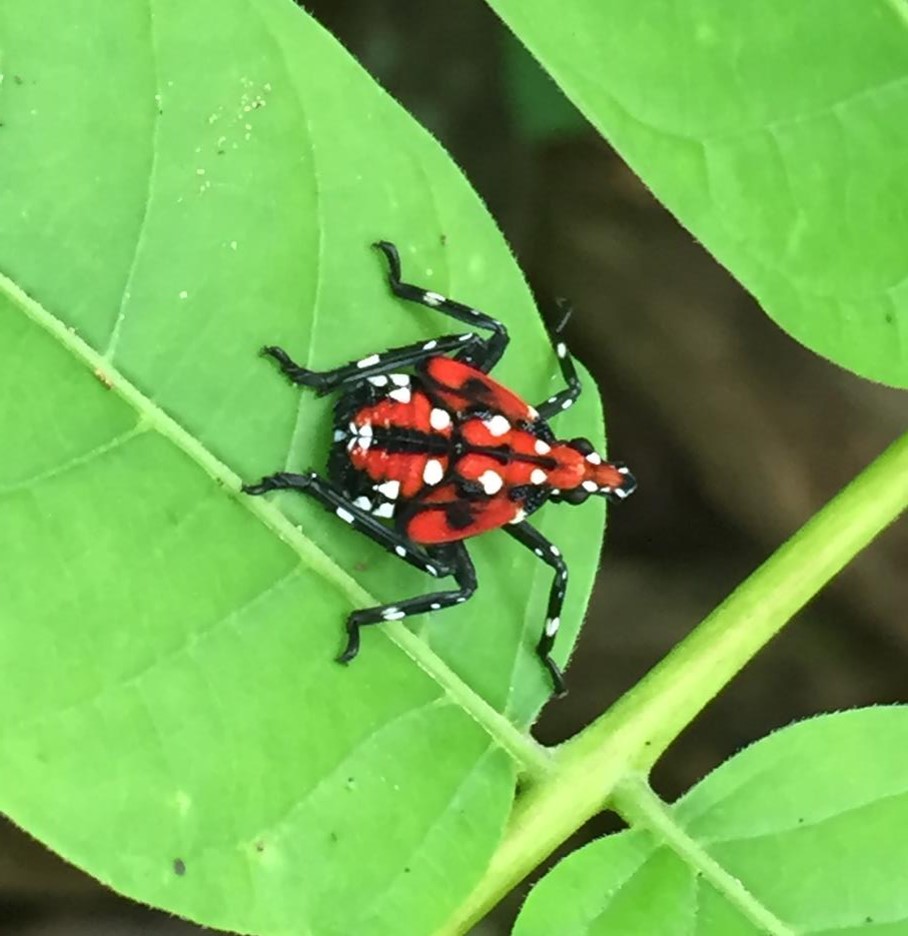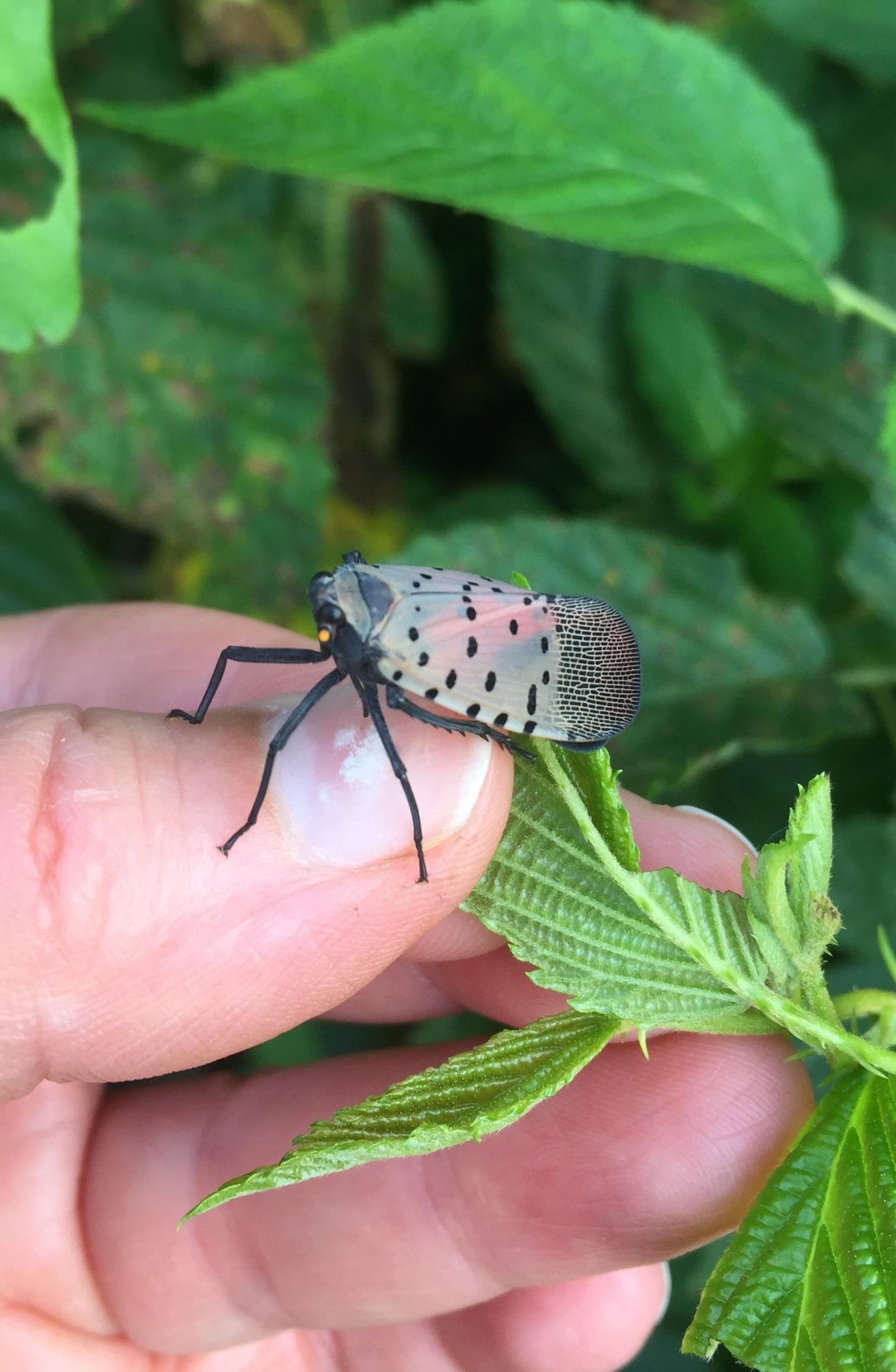
Spotted Lanternfly
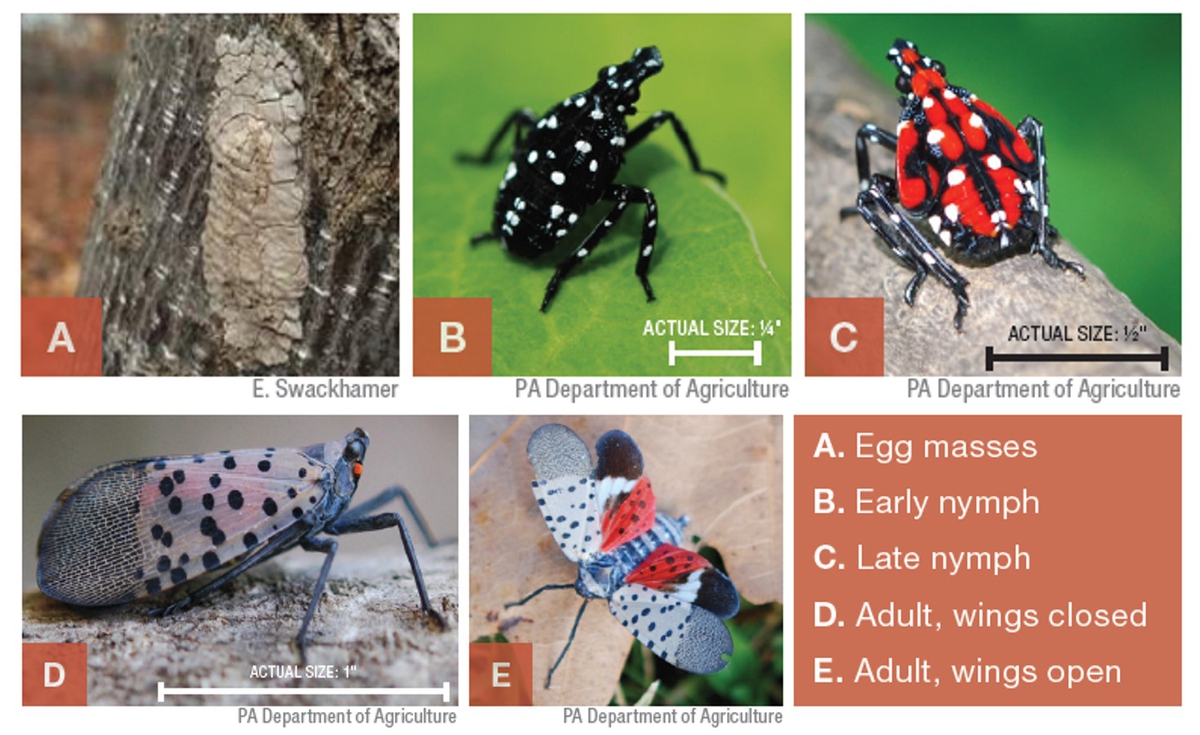
*Click here to read an article on the Spotted Lanternfly by PCCD Resource Conservationist Marianna Quartararo*
As of February 2021, Pike County has been added to the map of counties where Spotted Lanternfly has been found and is now in quarantine. This means that all individuals and businesses making regular trips in and out of the quarantine area should comply with the following tips:
- Learn what SLF looks like in all stages of life (see the slide show above and the egg mass video at the bottom of the page.)
- Learn what other counties are included in the quarantine (see the map below.)
- If you are a business, a Spotted Lanternfly permit is required. (Find out if your business needs a permit.)
- Inspect all personal items that are moved in and out of the quarantine zone, Spotted Lanternfly can hang on to anything!
Visit Penn State Extension to find more details on these listed steps.
What is Spotted Lanternfly?
- It is an invasive pest, native to Asia, first found in the United States in 2014.
- It has five distinct life phases (pictured right).
- It overwinters as egg masses, which can be found on trees, posts, lawn furniture, cars, and many other surfaces.
- Has piercing-sucking mouthparts that feed on the sap from over 70 different species of plants.
- The feeding damage can be detrimental to the plants, causing decreased plant health and even death.
- It excretes honeydew (a sugary substance) which can build up on surfaces, including lawn furniture, buildings, road signs, etc.
- The build up of honeydew on surfaces promotes the growth of sooty mold (fungi), which can turn the surface black and sticky.
- The honeydew can also attract other insects, including nuisance insects, such as bees and wasps.
- They can not bite, sting or cause direct harm to humans or animals.
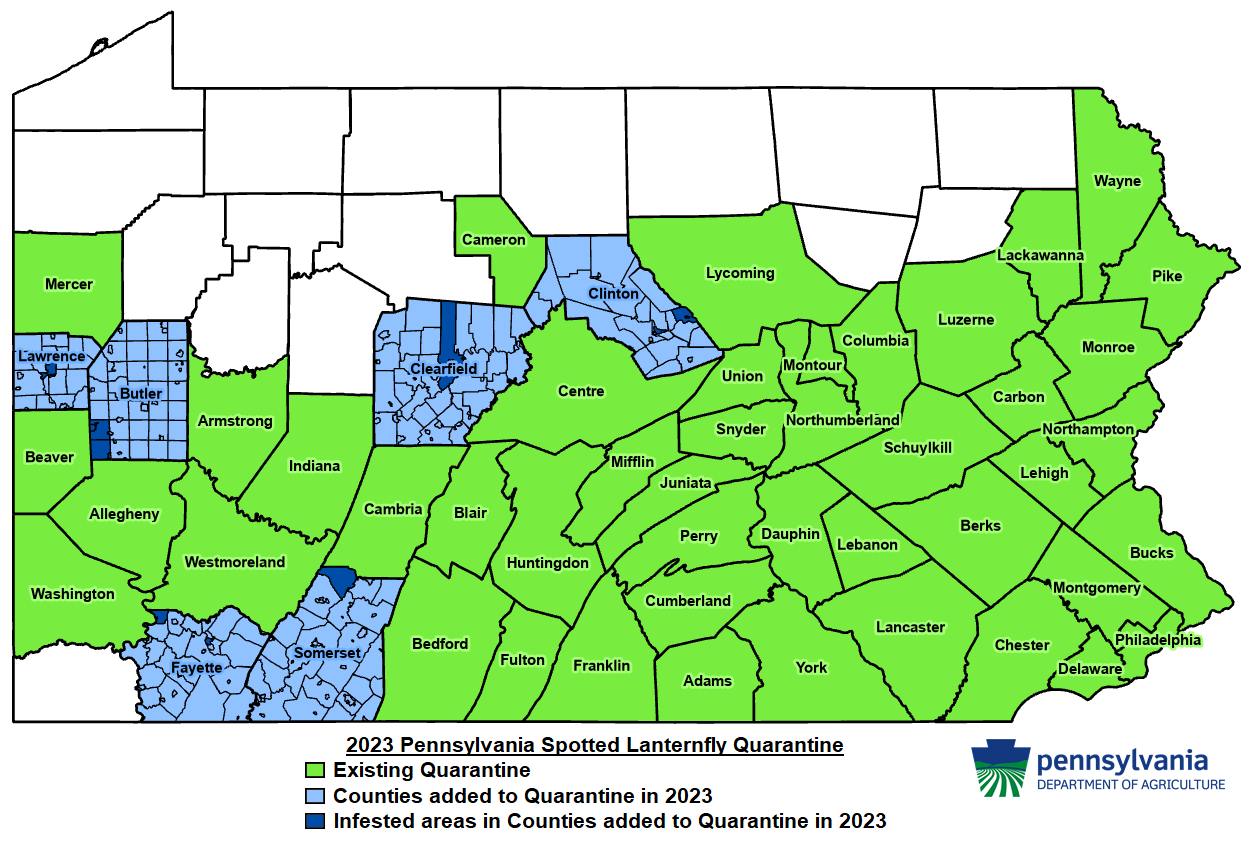
Where is it?
Spotted Lanternfly has been identified in 34 counties in Pennsylvania, after first being found in Berks county in 2014. These counties are now under a state-imposed quarantine for Spotted Lanternfly.
This quarantine affects vehicles traveling in, out and within the quarantined counties, and the loads they are carrying. The quarantine is to stop the spread of SLF into other counties and to slow the spread of the insects within the areas they already are. Review an interactive map that can tell you whether or not you are in a quarantine area.
Learn more about quarantine from the PA Department of Agriculture.
Spotted Lanternfly strongly prefers some economically important plants, which include grapevines, birch, willow, maple trees, etc. If quarantine is not adhered to, and the spread of Spotted Lanternfly goes unchecked, it could cost the Pennsylvania economy at least $324 million annually, according to economists at Penn State.
What to do about it?
When you spy a Spotted Lanternfly, no matter what life stage, you should squish it! For a demonstration of how to destroy what you found, watch the video below.
If you think you have found a Spotted Lanternfly, you should report what you found to Penn State Extension in your county. For help identifying and reporting Spotted Lanternfly, click here.
If you are a business that travels in and out of the quarantine counties, click here for permitting information for your vehicles.
To learn more about this invasive pest, visit Penn State's website for more information, click here.

Less than 1% of all the water on the Earth is fresh water we can drink.
Keep this water clean and free of pollution. Use all lawn and garden chemicals according to manufactures instructions and dispose of them properly. You can also choose organic lawn and garden care products.

